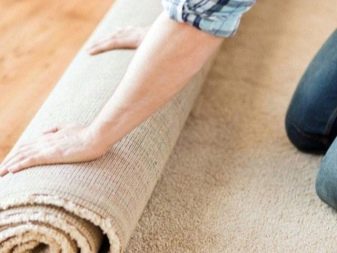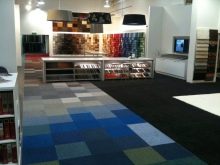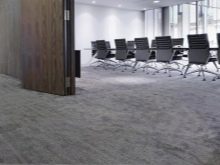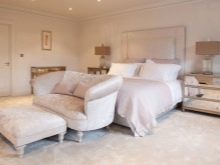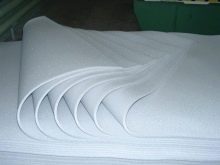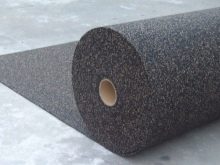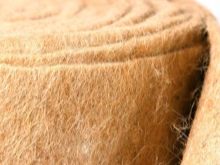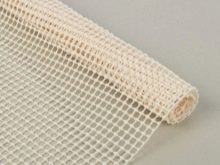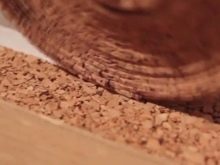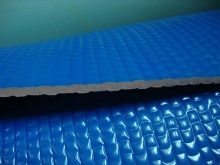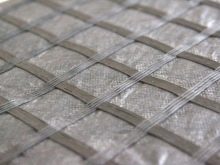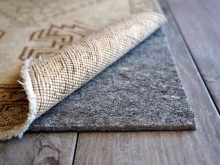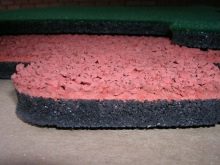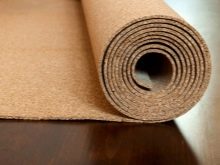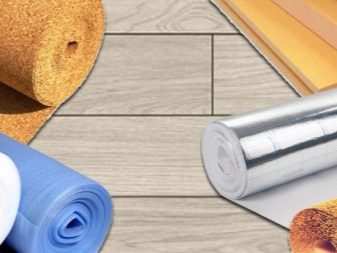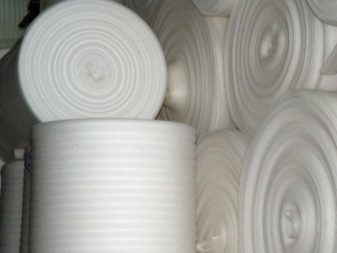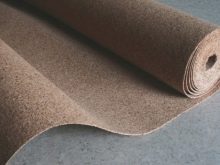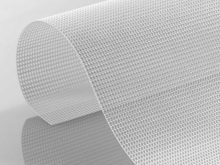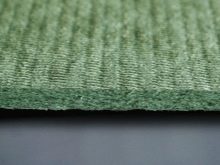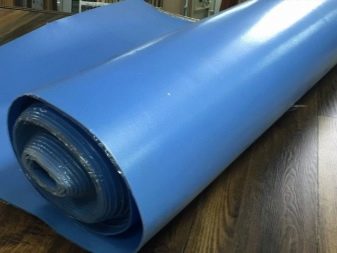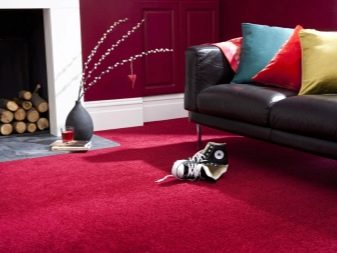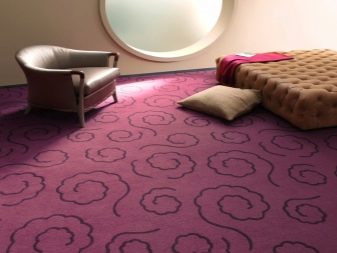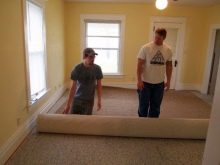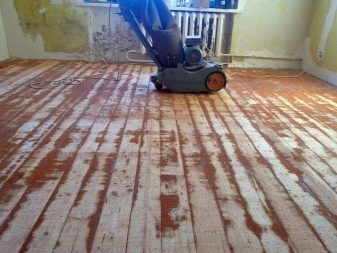Carpet underlay: which one to choose?
Thinking over the repair in the house, we try to take into account all the features of the layout and achieve the maximum functionality of our own square meters. When choosing a floor covering, it should be taken into account that its outer layer, or rather, its service life directly depends on what is under it.
If you chose carpet, then before laying it is necessary to prepare the floor with a special substrate. This material serves as a layer between the draft coating and the soft material, giving the latter only positive characteristics.
Regardless of the type of carpet and its foundations, laying the substrate is obligatory, because it helps to eliminate the disadvantages of the floor surface.And this, in turn, has a good effect on how the selected carpet will lie and wear. Improving the quality characteristics will favorably affect all inhabitants of the house, because the floor is the part of the room that we use all the time.
It is necessary to understand the variety of types and subtleties of working with the substrate under the carpet. Of course, it is possible to do without a layer between the carpet and the floor, but what consequences may then arise, we will consider further.
What is it and why?
The substrate is a roll material with high strength and insulation. Its thickness should be from 0.5 to 1 cm - these are the indicators that characterize quality material.
The substrate is necessary, as it performs the following important functions:
- Able to soften floor height differences or small gouges.
- The substrate significantly affects the durability of carpets, as it does not allow them to come into contact with the primary floor covering.
- If you decide to lay a high-pile carpet in the room, then the need for a substrate is incredibly great. The fact is that such a carpet can “sag” on an uneven floor, which will worsen its base, which serves as its skeleton. Violations of the base will lead to swelling or fraying carpet.
- Choosing a velor carpet and laying the substrate under it, you will achieve greater softness, which is quite pleasant to feel if you like to go barefoot.
- The budgetary baseless carpet will quickly fail if you do not put special material under it, which will contribute to its preservation and long service.
Kinds
Consider, what are the substrate under the carpet:
- The substrate on the felt base has good thermal insulation, has a dense structure, practically does not conduct sound.
- Jute-based has the same characteristics, will contribute to noise insulation.
- The cork layer is the safest from the point of view of environmental friendliness, does not crumble, absorbs the step. The floor will be warm enough to cushion the fall of any object. This type of material is especially recommended for use in children's rooms.
- Latex-based firmly held on the surface of the floor, provide reliable waterproofing.
- PVC coating provides noise and waterproofing, has high strength and reliability, in a room with such a coating will be kept warm.
- You can use polypropylene mesh as such a layer,However, the material can pass water, so it should not be used in areas with a high probability of moisture.
- Synthetic felt as a material for the substrate will help to preserve heat in the room and increase the softness of the carpet covering, hide the disadvantages of the floor in the form of irregularities.
- The base under the carpet can be made of rubber crumb. This is a fairly durable material that will ensure the durability of your cover and excellent cushioning steps. This base hides the unevenness of the floor and prevents wear of the carpet.
- Polyurethane foam base provides excellent sound insulation, and its moisture resistance and thermal conductivity will add comfort to the room.
- The substrate with the glue base will be a single unit with a coating that will ensure the strength and reliability of operation of such a tandem.
Which is better?
Having decided on the choice of the type of coverage, proceed to the definition of quality characteristics. It is worth noting that for different types of premises it is necessary to use different types of coatings.
Cork under carpet has predominantly positive characteristics.This warm floor, and excellent sound insulation. Such material is compatible with different types of coatings, so it can be called universal. Its disadvantage may be the price, but it is justified by the excellent quality of the material.
Natural felt can get wet, but in terms of thermal conductivity and sound insulation, it is excellent. Felt has a fibrous structure that will provide the best coupling with carpet.
Jute as a base for the substrate also contributes to improving the strength characteristics of the coating and isolates from extraneous noise, absorbing sound.
Rubber materials are ideal for leveling the surface of the floor, they absorb shock very well and withstand heavy loads. This substrate can be used for offices and other places where increased permeability.
Polyethylene bases under the carpet are moisture resistant and due to the special structure they have heat and noise insulation.
Polyurethane belongs to high-strength materials, which makes a high load and provides reliable waterproofing.
How to choose?
Facing the choice of the substrate, you should pay attention to the following features:
- If the carpet covering consists of natural material, it is better to choose the base of the cork. Combine materials by origin.
- If synthetic - choose the corresponding polyurethane base, such materials will be better and easier to connect to each other.
- When buying, pay attention to the appearance of the substrate, it should be fairly dense structure, although not very hard.
- With tactile contact and when compressing, the material must respond well and quickly restore its original shape. Otherwise
- case, do not purchase such a product.
- Quality material must have a certificate of quality and not have a strong odor, the structure of the substrate must be uniform and have a surface of the same thickness.
- For laying on a concrete floor, select the base of rubber, this will ensure a long service life of the soft coating.
Styling methods
In order to properly position the base under the carpet, you need to arm yourself with certain knowledge, so you will avoid blunders and unforeseen expenses.
On concrete
In this case, act as follows:
- Concrete floor should be cleaned of debris and dust.
- Determine whether it needs additional leveling, and if it is necessary, then you should not neglect this step, since it will badly affect the carpet itself and the layer will not protect it from deformation.
- After rough work with the floor, you can start laying the substrate. This can be done either in an adhesive-free way, or with a reliable fixing component. The need is determined by the substrate material, its resistance to crushability.
- In the case of laying the base under the carpet, which does not have a waterproofing, additionally carry out work on putting the film of a certain thickness.
- Carrying out these activities is mandatory, since it significantly affects the further use of carpeting and care.
- You can lay the substrate on the prepared floor, fixing it with double-sided tape.
On wooden floor
The nuances of working with this flooring:
- Pay attention to the presence of such defects as cracks or "walking" boards. Eliminating them will help prevent deformation of the top coating and increase its service life.
- Calculate the required amount of materials, measuring the parameters of the floor of the room and calculating their footage. The standard roll width is 1 m, and you choose the length individually.
- It is undesirable to level such a floor with a self-leveling screed; it is better to use plywood or chipboard.
- It is best to fix this type of coating with self-tapping screws or nails, which will ensure reliable fastening and will not allow any distortions in the future.
- In some cases, alignment stack two layers of plywood, and so that the joints of the sheets do not match (on the principle of masonry).
- Then proceed to laying the substrate itself, choosing the appropriate method.
- Joints fasten with the help of construction tape.
Recommendations of specialists
Professionals give such advice when choosing and installing the substrate for carpet:
- Before starting work, decide what type of installation you will produce to think about the next steps of work.
- Work on a rough alignment of the floor surface. Large differences in height and moving boards can lead to deformation and tearing not only of the laid lower layer, but also of the carpet itself.
- Decide on the choice of carpet and the corresponding substrate to match the quality characteristics and make them easy to lay.
- Purchase the necessary materials by the amount of coverage (adhesive mixture, tape, etc.), so as not to make wasted costs.
- After spreading out the material, let it lay down so that it lies on the floor evenly and does not bubble.
- Lay the bottom covering, not hurrying - how practical it will lay on the floor, the practicality of the top will depend.
Learn more about how to choose the substrate under the carpet, you will learn from the following video.


